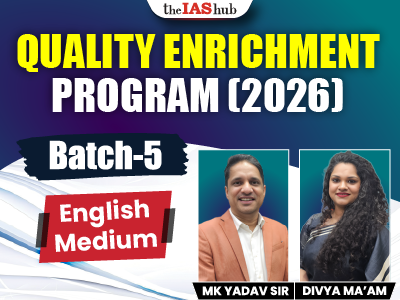Learn about the Central Board of Film Certification (CBFC), its functions, film certification types, and role in Indian cinema. Explore the evolution of censorship and FAQs about CBFC.

Central Board of Film Certification (CBFC) is a statutory body under the Ministry of Information and Broadcasting, Government of India. It regulates the public exhibition of films in India by certifying them under various categories.
In this article, we will provide a detailed overview of the CBFC, including its full form, functions, film certification types, and its role in Indian cinema. Whether you’re a film enthusiast, a student, or a UPSC aspirant, this guide will help you understand the workings of the CBFC in simple language.
The Central Board of Film Certification (CBFC) is responsible for certifying films for public exhibition in India. It ensures that films adhere to the guidelines set under the Cinematograph Act, 1952. The CBFC evaluates films based on their content and assigns appropriate certifications to ensure they are suitable for specific audiences.
The CBFC was established in 1952 under the Cinematograph Act, 1952. It replaced the earlier regional censor boards that operated during the British era. The board was initially known as the Central Board of Film Censors and was later renamed the Central Board of Film Certification in 1983.
Cinematograph Act, 1952 is the legal framework that governs the certification and exhibition of films in India. It empowers the CBFC to:
The Act also defines the categories of film certification and the process for appealing against CBFC decisions.
CBFC consists of a Chairperson and 23 members appointed by the Central Government. The members are chosen from various fields, including social science, education, law, arts, and filmmaking. The current CBFC Chairman is Prasoon Joshi, a renowned lyricist and screenwriter.
The primary functions of the Central Board of Film Certification include:
The CBFC certifies films under the following categories:
| Category | Description |
| U | Unrestricted public exhibition, suitable for all age groups. |
| A | Restricted to adult audiences (18+). |
| S | Restricted to specialized audiences (e.g., doctors, scientists). |
The concept of film censorship in India dates back to the Indian Cinematograph Act, 1918, which was introduced during British rule. After independence, the Cinematograph Act, 1952 was enacted, leading to the establishment of the CBFC. Over the years, the CBFC has evolved to address the changing dynamics of Indian cinema and societal norms.
The CBFC often faces criticism for allegedly curbing freedom of speech and expression. Filmmakers argue that the board’s demands for cuts and edits sometimes dilute the essence of their work. However, the CBFC maintains that its role is to balance creative freedom with societal values and legal guidelines.
With the rise of Over-The-Top (OTT) platforms like Netflix and Amazon Prime, the need for regulating digital content has gained attention. While the CBFC certifies films for theatrical release, OTT platforms are currently self-regulated under the Information Technology (Intermediary Guidelines and Digital Media Ethics Code) Rules, 2021.
The Film Certification Appellate Tribunal (FCAT) was established to hear appeals against CBFC decisions. However, the FCAT was abolished in 2021 through the Tribunals Reforms (Rationalisation and Conditions of Service) Ordinance, 2021. Filmmakers now need to approach the High Court to appeal against CBFC decisions.
The CBFC has faced criticism for various reasons, including:
To address these challenges, the following steps can be taken:
The Central Board of Film Certification (CBFC) plays a crucial role in regulating Indian cinema. By balancing creative freedom with societal values, the CBFC ensures that films are suitable for diverse audiences. Understanding its functions and challenges helps us appreciate its significance in shaping Indian cinema.
The CBFC certifies films under four categories: U, U/A, A, and S.
The CBFC was established in 1952 under the Cinematograph Act, 1952.
It is the legal framework that governs film certification and exhibition in India.
The CBFC certifies films, prescribes age restrictions, and ensures compliance with legal guidelines.


Refine your answer writing skills and elevate your UPSC preparation with personalized support and expert feedback.
Fill out the form to get started with the program or any other enquiries !








Are you dreaming of becoming an IAS officer? Then, IAShub can be your best guide. It is one of the Best IAS Coaching in Delhi. Many students who want to clear the UPSC exam join IAShub for learning. The institute gives both online and offline classes. Their teachers are experienced and helpful. They easily explain every topic. Students also get notes, tests, and tips to do well in the exam.
IAShub is in Delhi and is trusted by many UPSC students. It offers coaching for every part of the UPSC exam – Prelims, Mains, and Interview. The classes are simple and easy to understand. The teachers are experts and guide students in the right way. IAShub is also known for its helpful notes, test series, and answer-writing practice. IAShub is the best coaching in Delhi and also gives UPSC Online Classes. This helps students from any place in India to learn. The online classes are live and also recorded. So, students can watch them anytime. These classes cover the full UPSC syllabus.
Here are some important services provided by IAShub:
The UPSC Civil Services Exam has three parts:
This exam is tough, but with the right guidance, it becomes easy to manage. Students must study smart and stay regular.
IAShub supports students from the beginning to the end. It gives the right books, tests, and notes. The classes are easy to follow, and the teachers are always ready to help. Students get personal doubt sessions too. The test series and answer checking help students learn where they need to do better. Also, free study materials save time and money.
IAShub also guides students during the final stage – the interview. Experts take mock interviews and give useful tips. This full support makes IAShub one of the best IAS coaching in Delhi.
